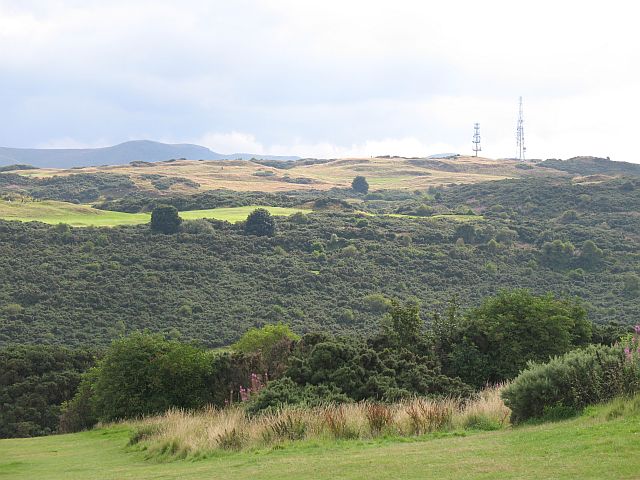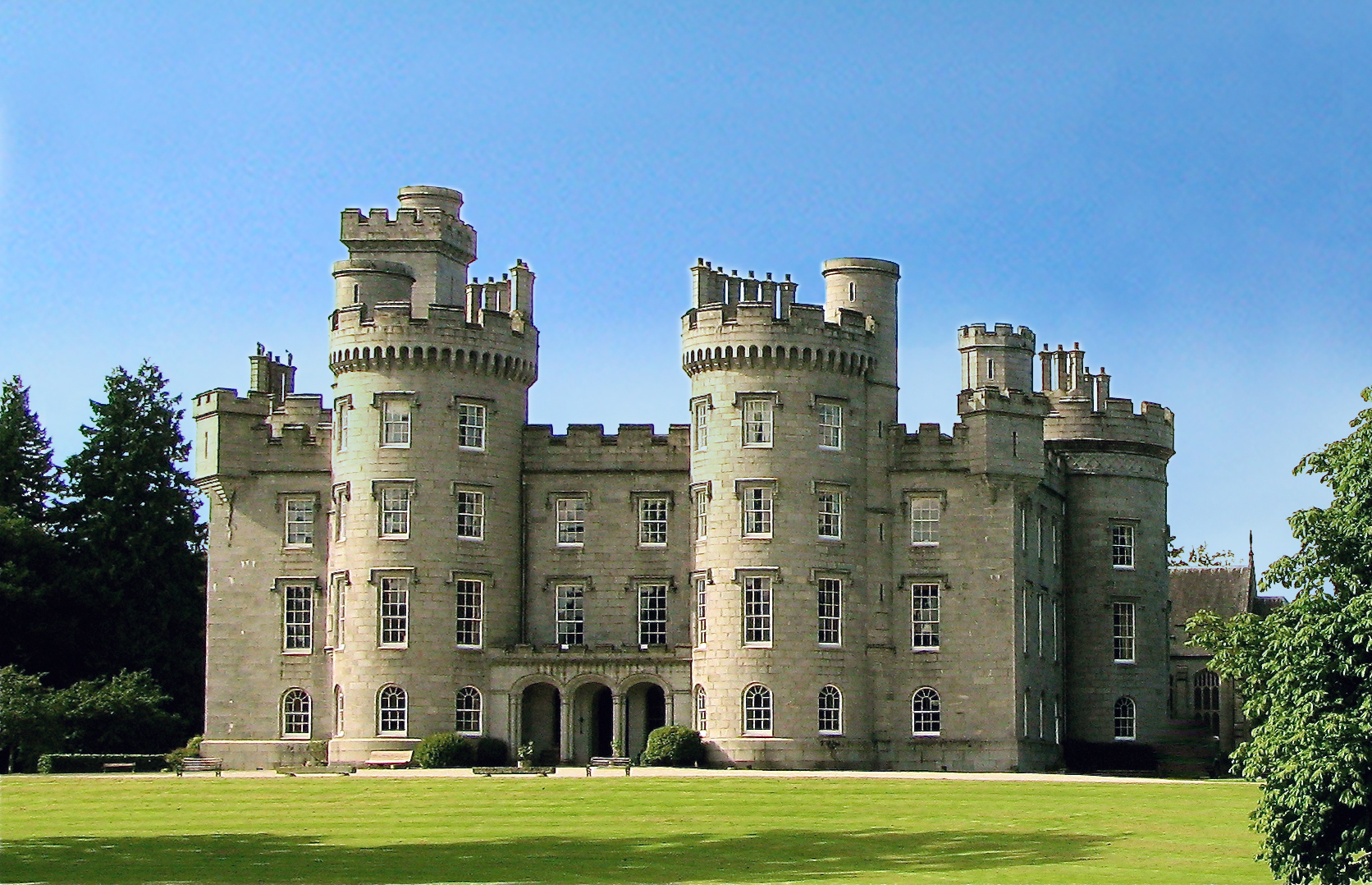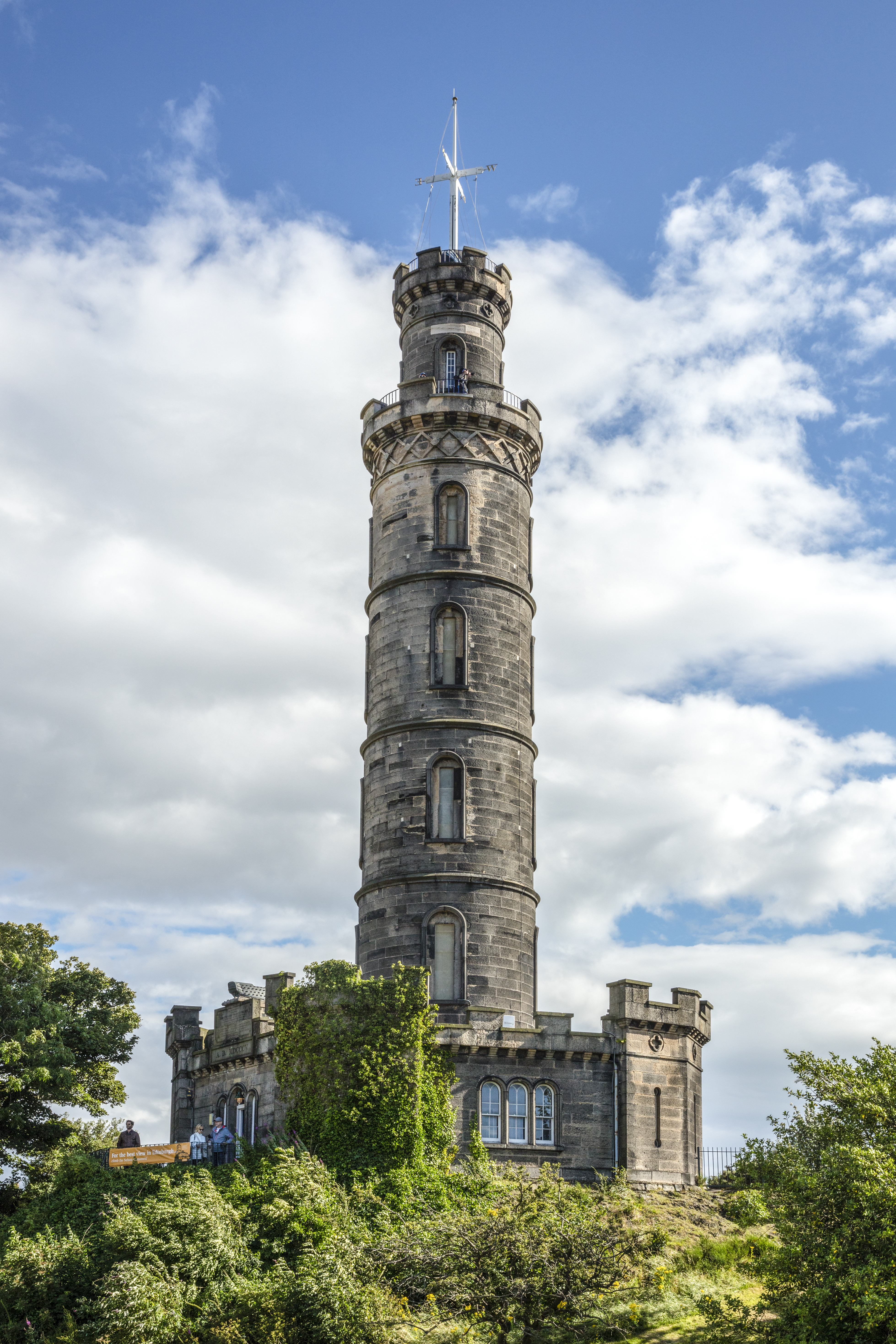|
Hermitage Of Braid
The Hermitage of Braid is an area between the Braid Hills and Blackford Hill. The Braid Burn runs through it. It comprises part of the Hermitage of Braid and Blackford Hill Local Nature Reserve. History The Braid estate was the property of the de Brad family one of whom, Henri de Brad, was Sheriff of Edinburgh in the 12th century. A castle stood on the estate until the 18th century. In the 18th century the estate was purchased by the lawyer Charles Gordon of Cluny (died 1814), who commissioned the present house, known as Hermitage of Braid or Hermitage House, which stands on the north side of the Braid Burn. The house was built in 1785 by the Edinburgh architect Robert Burn. The castellated Gothic style may have been influenced by the work of Robert Adam. Charles Gordon's son was the soldier and MP Colonel John Gordon (c.1776–1858). The house is a category A listed building In the United Kingdom, a listed building or listed structure is one that has been placed on one ... [...More Info...] [...Related Items...] OR: [Wikipedia] [Google] [Baidu] |
Hermitage House - Geograph
Hermitage, The Hermitage or L'Hermitage may refer to: * Hermitage (religious retreat), a place of religious seclusion Places * The Hermitage Museum (est. 1754), in Saint Petersburg, Russia * The Hermitage (Nashville, Tennessee), the estate of Andrew Jackson Australia * The Hermitage (Australia), a school in Geelong, Victoria * The Hermitage, Queensland, a locality in the Southern Downs Region * The Hermitage, Ryde, a historic house in Sydney * The Hermitage, Vaucluse, a historic house in Sydney * Upper Hermitage, South Australia, a rural area near Adelaide * Lower Hermitage, South Australia, a rural area near Adelaide. Canada *Hermitage, Edmonton, Alberta * Hermitage–Sandyville, a small town in Newfoundland * The Hermitage (Hamilton, Ontario), a historic house Denmark * Hermitage Hunting Lodge, a royal hunting lodge north of Copenhagen France * Crozes-Hermitage, a commune of the Drôme département * L'Hermitage, a commune in the Ille-et-Vilaine département, ... [...More Info...] [...Related Items...] OR: [Wikipedia] [Google] [Baidu] |
Braid Hills
The Braid Hills form an area towards the south-western edge of Edinburgh, Scotland. The hills themselves are largely open space. Housing in the area is mostly confined to detached villas, and some large terraced houses. The ''Braid Hills Hotel'' sits above Pentland Terrace and Comiston Road, overlooking the park across the road. The area is well known for its golf course and its views of the city, and is a popular destination for families taking children sledging in the winter. There is also a riding stables and school, eastwards towards Liberton, which arranges pony trekking. Nearby areas are Morningside to the north, Comiston to the west, and Liberton to the east. The core of the name is shared with the Braid Burn The Braid Burn is a burn or stream in length that flows through south and east Edinburgh. Course The burn forms near Bonaly in the Pentland Hills south-west of the city, when the Bonaly and Howden burns that flow from the Pentlands meet. Fr ... and the ne ... [...More Info...] [...Related Items...] OR: [Wikipedia] [Google] [Baidu] |
Blackford Hill
Blackford Hill is a hill in Edinburgh, the capital city of Scotland. It is in the area of Blackford, between Morningside, and the Braid Hills. Together with the Hermitage of Braid, it comprises the Hermitage of Braid and Blackford Hill Local Nature Reserve, within which lies Hermitage House. History There is an ancient hill fort on the summit area of the hill which, along with the circular foundations of some nearby houses, is protected as a Scheduled Ancient Monument. Blackford Hill was bought by the Edinburgh Corporation in 1884, and the adjacent Hermitage of Braid estate was given to the city of Edinburgh in 1938, by its final owner, John McDougal. The gift allowed the Hermitage to be used as "a Public Park or Recreation Ground for the benefit of the citizens." The City of Edinburgh Council retains ownership of the park and is primarily responsible for its maintenance. This is done primarily through the ranger service, with the assistance of other council teams such as T ... [...More Info...] [...Related Items...] OR: [Wikipedia] [Google] [Baidu] |
Braid Burn
The Braid Burn is a burn or stream in length that flows through south and east Edinburgh. Course The burn forms near Bonaly in the Pentland Hills south-west of the city, when the Bonaly and Howden burns that flow from the Pentlands meet. From there, it flows in a generally north-easterly direction, skirting the Braid Hills to the east and south, via the Braid Valley Park, the Hermitage of Braid, Blackford Glen, Cameron Toll and Inch Park. On reaching Peffermill it is joined by the Jordan Burn, and at Duddingston its name changes to the Figgate Burn. It flows on to enter the Firth of Forth at Portobello. The area of the basin drained by the burn and its tributaries amounts to . The burn rises quickly after rain, and can become very large when in spate. 80 per cent of the catchment area of the burn is in the lower urban section, the other portion being south of the Edinburgh City Bypass. The burn flows through part of its course in a gorge cut by glacial meltwater that expo ... [...More Info...] [...Related Items...] OR: [Wikipedia] [Google] [Baidu] |
Cluny Castle
Cluny Castle was originally built c.1604 as a Z-plan castle replacing either a house or small peel tower. Sited in the parish of Cluny, it is south of Monymusk and north of Sauchen in Aberdeenshire, north-east Scotland. Owned by three separate branches of Gordon families over the centuries, it was used to shelter Jacobite rebels in the mid-18th century. Extensive additions were made in 1820 to the design of architect John Smith when it was in the ownership of Colonel John Gordon. Two wings of the castle and the adjoining private chapel were destroyed by fire in 1926, but the damage was restored. It is a Category A listed building and has been used as a film setting. The grounds are included on the Inventory of Gardens and Designed Landscapes in Scotland. it remains privately owned by the Baron of Cluny who has employed craftsmen to complete extensive renovations. It is not open to the public but corporate events are hosted there and weddings are held in the chapel. Histor ... [...More Info...] [...Related Items...] OR: [Wikipedia] [Google] [Baidu] |
Robert Burn (architect)
Robert Burn (1752–1815) was a Scottish architect. He was father to the architect William Burn. Life He was born in 1752 in Jessfield House between Newhaven and Leith in north Edinburgh the eldest son of Robert Burn and his wife, Mary Patterson. He trained as a monumental stonemason. From 1772 to 1775, he was employed by James Weir of Tollcross to repair and rebuild St Cuthbert's Church, Edinburgh. In 1782, he was made a burgess of the town of Edinburgh and in 1796 entered the Dean of Guild Council. From 1805 to 1815, he ran a drawing academy at Picardy Place in Edinburgh. This became known as the Trustees Academy and relocated to the Royal Institution in 1826. In 1814, he is listed as Robert Burn and Company, Builder and Marble-cutter with yards on Leith Walk. He is then thought to be living with his son Thomas Burn at 24 Greenside Street at the top of Leith Walk. He died on 5 June 1815 and is buried in a Gothic vault in Old Calton Burial Ground in Edinburgh City Ce ... [...More Info...] [...Related Items...] OR: [Wikipedia] [Google] [Baidu] |
Robert Adam
Robert Adam (3 July 17283 March 1792) was a British neoclassical architect, interior designer and furniture designer. He was the son of William Adam (1689–1748), Scotland's foremost architect of the time, and trained under him. With his older brother John, Robert took on the family business, which included lucrative work for the Board of Ordnance, after William's death. In 1754, he left for Rome, spending nearly five years on the continent studying architecture under Charles-Louis Clérisseau and Giovanni Battista Piranesi. On his return to Britain he established a practice in London, where he was joined by his younger brother James. Here he developed the "Adam Style", and his theory of "movement" in architecture, based on his studies of antiquity and became one of the most successful and fashionable architects in the country. Adam held the post of Architect of the King's Works from 1761 to 1769. Robert Adam was a leader of the first phase of the classical revival in En ... [...More Info...] [...Related Items...] OR: [Wikipedia] [Google] [Baidu] |
John Gordon (soldier)
John Gordon (1776 – 16 July 1858) was a Scottish soldier and Tory politician. Gordon was the son of Charles Gordon of Braid and Cluny, Aberdeenshire, and his wife Johanna Trotter. Gordon became 2nd lieutenant in the Royal Aberdeenshire Light Infantry on 2 December 1800. He was then lieutenant in the 7th Company of the 55th Aberdeenshire Militia on 25 April 1804. In 1804 Gordon made a grand tour of Egypt, carving his name on many ancient monuments. He returned home via Gibraltar where he boarded HMS Victory, which also brought home the mortal remains of Admiral Horatio Nelson. He arrived back in England in December 1805. Gordon became major on 11 August 1808 and lieutenant-colonel on 6 June 1820. On the death of his father in 1814, Gordon inherited his estates including Cluny Castle; he was already a wealthy man as he also succeeded to his uncle's estate, who had been a merchant in West India. He purchased further properties, including North and South Uist, Benbecula and Barr ... [...More Info...] [...Related Items...] OR: [Wikipedia] [Google] [Baidu] |
Listed Building
In the United Kingdom, a listed building or listed structure is one that has been placed on one of the four statutory lists maintained by Historic England in England, Historic Environment Scotland in Scotland, in Wales, and the Northern Ireland Environment Agency in Northern Ireland. The term has also been used in the Republic of Ireland, where buildings are protected under the Planning and Development Act 2000. The statutory term in Ireland is " protected structure". A listed building may not be demolished, extended, or altered without special permission from the local planning authority, which typically consults the relevant central government agency, particularly for significant alterations to the more notable listed buildings. In England and Wales, a national amenity society must be notified of any work to a listed building which involves any element of demolition. Exemption from secular listed building control is provided for some buildings in current use for worship, ... [...More Info...] [...Related Items...] OR: [Wikipedia] [Google] [Baidu] |
Lord Provost Of Edinburgh
The Right Honourable Lord Provost of Edinburgh is the convener of the City of Edinburgh local authority, who is elected by City_of_Edinburgh_Council, the city council and serves not only as the chair of that body, but as a figurehead for the entire city, ex officio the Lord-Lieutenant of Edinburgh. It is the equivalent in many ways to the institution of Mayor that exists in many other countries. While some of Scotland's subdivisions of Scotland, local authorities elect a Provost (civil), Provost, only the four main cities (Edinburgh, Glasgow, Aberdeen, Scotland, Aberdeen and Dundee, Scotland, Dundee) have a Lord Provost. In Edinburgh this position dates from 1667, when Charles II of England, Charles II elevated the Provost to the status of Lord Provost, with the same rank and precedence as the Lord Mayor of London. The title of Lord Provost is enshrined in the ''Local Government etc. (Scotland) Act 1994''. Roles and Traditions Prior to the Local Government (Scotland) Act 197 ... [...More Info...] [...Related Items...] OR: [Wikipedia] [Google] [Baidu] |
Parks And Commons In Edinburgh
A park is an area of natural, semi-natural or planted space set aside for human enjoyment and recreation or for the protection of wildlife or natural habitats. Urban parks are green spaces set aside for recreation inside towns and cities. National parks and country parks are green spaces used for recreation in the countryside. State parks and provincial parks are administered by sub-national government states and agencies. Parks may consist of grassy areas, rocks, soil and trees, but may also contain buildings and other artifacts such as monuments, fountains or playground structures. Many parks have fields for playing sports such as baseball and football, and paved areas for games such as basketball. Many parks have trails for walking, biking and other activities. Some parks are built adjacent to bodies of water or watercourses and may comprise a beach or boat dock area. Urban parks often have benches for sitting and may contain picnic tables and barbecue grills. The ... [...More Info...] [...Related Items...] OR: [Wikipedia] [Google] [Baidu] |


.jpg)



.jpg)



